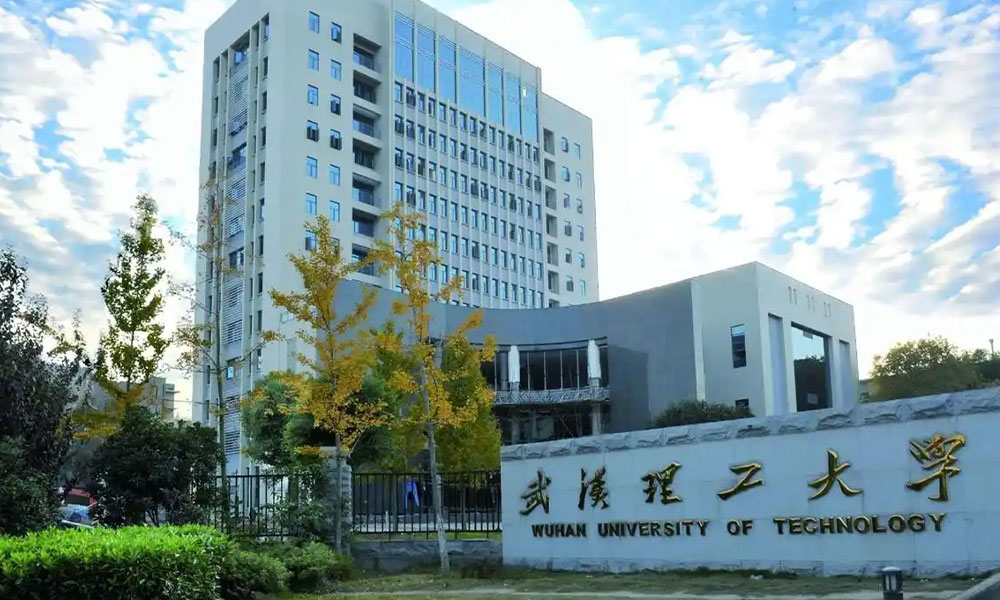Located on the powerful Yangtze River, Wuhan is a bustling center of old tradition and new ambition in central China. Nicknamed the “City of a Thousand Lakes” for its widespread waterways, and the “Thoroughfare of Nine Provinces” as a transportation hub, this booming city of over 12 million buzzes with energy. By 2025, Wuhan is not merely China’s economic powerhouse—a hub for industries ranging from optics to automobiles to biotech—but also a developing global education center. One of the nation’s largest student populations, numbering more than 1.2 million students attending more than 80 universities and colleges, calls Wuhan home.
For international students, study in Wuhan universities for international students offers the ultimate package: world-class universities, low costs, and an oriental cultural palette spun from East and West. In this article from admissions institute, we get down to the admission requirements for Wuhan universities, providing you with top-class universities, leading you behind the doors of admission channels, and tuition fees of Wuhan universities. Regardless of your aim – a bachelor’s in artificial intelligence or a PhD in renewable energy – Wuhan gets you ready for success.
Why Wuhan?
Wake up to cherry blossoms shrouding Luojia Hill at Wuhan University or exchanging innovative engineering concepts in the lush “Forest University” campus of Huazhong University of Science and Technology (HUST). These are not just picturesque landscapes; they are gateways to transformative learning experiences. While study in China drives its “Double First-Class” program—urging major universities into the world’s top ranks—Wuhan’s top universities are investing heavily in foreign programs, English-language teaching, and international exchange. By 2025, with eased visa regulations and larger scholarships, the city receives over 20,000 overseas students annually, with a truly multicultural environment.
Beneath all the gravity of scholarship, it’s the city’s irrepressible energy. Street vendors peddle steaming dishes of reganmian (spicy hot dry noodles), a hot but cozy favorite noodle dish, and East Lake greens encourage evening runs in fields of blooming lotus. Wuhan recovered from past errors with rebuilt infrastructure like high-speed rail to Beijing in four hours. For Asian, African, European, and international students, study in Wuhan universities is money for value: reasonable fees a fraction of what their Western counterparts ask, added to grants that ease the burden.

Finding Wuhan’s Intellectual Powerhouses
Wuhan’s university system is diverse, from all-around flagships to specialist gems, funded by provincial and Ministry of Education investments. The cream of the crop is under Project 211 and 985—national efforts to cultivate world-class talent. Centered around internationalization, these universities have sole international offices and collaborations with over 200 universities worldwide, from Harvard University to the University of Tokyo. These are the best options to study in Wuhan universities:
| University | Global Rank 2025 | English Programs | Annual Tuition (CNY) |
| WHU | 186 (QS) | 120+ | 28,000 |
| HUST | 235 (THE) | 80+ | 32,000 |
| WUT | 400+ | 24 | 24,000 |
1. Wuhan University (WHU): The Crown Jewel of Cherry Blossoms
Dating back to 1893, when Ziqiang Institute was founded by Zhang Zhidong during the modernization efforts of the Qing Dynasty, Wuhan University is now a benchmark of comprehensive excellence. It now has a large 5,300-acre campus near Luojia Hill and East Lake, and was named “China’s Most Beautiful University.” In the QS World University Rankings of 2025, it achieved 186th globally and ninth in China, and is especially strong in disciplines like hydrology, remote sensing, and law. It consists of 37 schools and over 120 undergraduate programs for 60,000 students, out of which 3,000 are internationals from 120 countries. For international students who like to study in Wuhan universities, WHU’s charm is its interdisciplinary nature.
The university’s 243 doctoral programs, like optics and materials science, involve cutting-edge labs, like the National Key Laboratory for Digital Mapping. Beyond the classroom, WHU’s “classroom without walls” ethos is seen in initiatives like the Master of International Business (MIB) program’s field-based sustainability treks, in which students follow eco-projects along the Yangtze by drone. WHU’s focus on Belt and Road partnerships in 2025 will see rising exchanges with African and Southeast Asian partners, ideally suited to students with international ambitions.
2. Huazhong University of Science and Technology (HUST): Shaping the Future
Where WHU is lyrical, HUST is utilitarian—a giant founded in 1953 as the Huazhong Institute of Technology and today a Double First-Class powerhouse listed 235th globally by Times Higher Education. Its “University in the Forest” moniker—more than 460 hectares with 72% coverage—is a misnomer: a tech-savvy core beat beneath. More than 3,000 faculty members, six of whom are members of the Chinese Academy of Sciences, fuel advances in biomedicine and optoelectronics. HUST excels on convergence to study in Wuhan universities. Then in 2000, Tongji merged with Tongji Medical College and attained its robust fields in integrated circuits and telemedicine—fields that it has five national key labs.
International students, 2,500 from 100+ nations, flock to 80+ English programs, from Biomedical Engineering (BEng) to MSc in Mechanical Engineering. Picture yourself slicing viral genomes in the State Key Lab of Virology or producing robots in the National Engineering Research Center for Laser Processing. HUST’s 2025 debut? The world’s first pulsed high magnetic field facility, open to grad researchers. With double-degree partnerships like the University of Michigan, graduates from HUST get employed at Tesla or WHO, with theory merged with applied power.

3. Wuhan University of Technology (WUT): Nurturing Innovators of Tomorrow
Conceived in a 2000 merger of three respected institutions—Wuhan Industrial University, Wuhan Transportation University, and Wuhan Automotive Polytechnic—WUT is a Ministry of Education darling of the 211 Project. WUT spans 2,800 acres over three campuses, has 40,000 students, 1,500 of whom are international, and is one of the bests to study in Wuhan universities. WUT’s DNA is practical: see naval architecture labs replicating Yangtze storms or automotive bays transforming electric cars.
Undergraduates choose from 24 English majors, e.g., Naval Architecture and Ocean Engineering (BEng), while PhD students research green shipping in the International Joint Lab with Delft University. WUT’s Aix-Marseille Joint Institute provides additional French-English variants in AI in 2025, with 500+ exchange students each year. Faculties like those in the State Key Lab of Silicate Materials have patents powering China’s high-speed rail boom. For future engineers, WUT is not a degree but a stepping stone to giants like COSCO or Siemens.
4. Central China Normal University (CCNU): Nurturing Minds and Morals
Established in 1903 as Wenhua Academy’s Teachers College, CCNU has spearheaded pedagogy, now a 211 Project mainstay with 28,000 students on a hillside campus of 2,000 mu. Ranked 15th in Chinese education by QS 2025, it equally balances tradition—Deng Xiaoping wrote its name—with modernity, admitting 1,000 internationals. CCNU excels in teacher training, with BEd in English Education and MEd in Educational Technology. Among its 79 undergraduate degrees are Psychology and Environmental Science, plenty of English.
Highlights: the “Five Identities” course for national unity, or labs into child development using AI. Collaboration with the University of Wisconsin opens joint MSEd programs. Alumni teach across the globe, from Singapore’s MOE to UNESCO projects. In 2025, CCNU’s “111 Plan” lures foreign talent, cross-cultural teaching courses improve.
5. South-Central Minzu University (SCMU): Feisty Diversity
Founded in 1951 as a college of nationalities, SCMU—under the State Ethnic Affairs Commission—is one of the best options to study in Wuhan universities, with 28,000 students, of which 800 are internationals representing 50 countries. It’s a 2025 highlight of ethnic studies with Tujia dance and Yi medicine courses. Its 20 colleges offer BA in Ethnic Economics and MSc in Intangible Heritage with “Chinese Nation as Family” specialty. English programs are offered in Public Administration. Notable points: the Ethnology Museum, China’s first ethnology museum, and cooperative agreements with UFBA in Brazil for cultural exchanges. Recipient of the “National Model for Ethnic Unity” award, SCMU trains students for a career in diplomacy or culture preservation.
They are the brains of Wuhan, each filling a niche that he or she does but collectively who share resources under the Wuhan University Alliance. They do not only transfer knowledge but also networks worldwide, from WHU’s liberal education to HUST’s technological superiority.

Admission Requirements for Wuhan Universities: Your Guide to Getting Enrolled
Admission requirements for Wuhan universities are planned but effective procedures make it feasible. Dates for admission in 2025 are in the range of March-April for fall intakes and some have rolling admissions. As the university is completely online, the specifics vary.
Start with eligibility: Not Chinese, 18+, in good health and holding a valid passport. Undergraduates need high school diplomas; postgraduates need parallel bachelor’s/master’s to study in Wuhan universities. Language abilities come first: HSK Level 4+ for courses in Chinese (pre-course available at most); TOEFL 80+ or IELTS 6.0+ for English courses. No HSK? WHU and HUST have year-long bridges.
Application is staged. First register in CSC portal (for scholarships) or university websites like WHU’s admission.whu.edu.cn. Upload: notarized transcript, recommendation letters (two for postgraduates), study plan (800+ words for PhD), and copy of passport. Interviews—typically Zoom—evaluate fit; HUST’s engineering applicants show projects, and CCNU discusses teaching philosophy.
Financial documents? $5,000+ bank statement is enough for independent applicants. Visas next: JW202 university form to X1/X2 at Chinese embassies. Processing time: 4-6 weeks. Tip: Get in early—competitive programs like HUST’s biomed fill up early. With 20-30% acceptance rates for internationals, a high GPA (3.0+) and extracurriculars seal the deal.
Tuition Fees of Wuhan Universities: Value Without the Heft
Wuhan’s affordability shines brightest here. Undergraduate tuition fees of Wuhan universities in 2025 are 20,000-35,000 CNY ($2,800-$4,900 USD) annually, master’s 25,000-40,000 CNY ($3,500-$5,600), PhDs the same plus lab fees. WHU’s English BBA: 28,000 CNY; HUST’s MSc Engineering: 32,000 CNY; WUT’s Naval BEng: 24,000 CNY; CCNU’s BEd: 22,000 CNY; SCMU’s Ethnic Studies BA: 20,000 CNY.
Add-ons: Application fees to study in Wuhan universities (400-800 CNY), insurance (800 CNY/year). But scholarships are plentiful—more in a minute—negating costs to zero for many.
Living expenses? A steal at 3,000-5,000 CNY/month ($420-$700). On-campus apartments: 7,500-12,000 CNY/year for twin/singles, AC and Wi-Fi. Food: 10-20 CNY in cafeteria; groceries 1,500 CNY/month. Commute: Metro monthly pass 150 CNY. Total spends? Less than $8,000/year—half Beijing’s. Utilities and recreation (gym 100 CNY/month) keep it low.
| Category | Estimated cost (CNY/Year) | notes |
| Tuition fees (undergraduate) | 20.000-35.000 | English programs slightly higher |
| accommodation | 7.500-12.000 | Shared/single rooms |
| food | 10.000-15.000 | Campus canteens + occasional eats out |
| transport | 1.000-2.000 | Metro/bike shares |
| Misc (books, insurance) | 2.000-3.000 | Include health coverage |

Scholarships: Making Dreams Come True Across Borders
No discussion of Wuhan studies is complete without funding—2025 welcomes $100M+ sponsorship. CSC Chinese University Program, via WHU and HUST, offers full tuition, dorms, 3,500 CNY/month PhD stipend, and insurance. Apply in February: Test scores, proposals, and two recommendations make it final. Success rate: 15% for top applicants.
University-specific gems: WHU Presidential Scholarship (30,000 CNY/year partial); HUST’s Fresh Talent Fund (full scholarship + research allowances); WUT’s Belt and Road Initiative scholarships for developing countries. CCNU’s “Yang Lei Feng” assists teachers; SCMU’s Ethnic Unity Grants assist diversity students. Over 70% of internationals are assisted, official data claims.
Conclusion
As 2025 begins, study in Wuhan universities is no longer an intellectual endeavor, but a deep experience of transformation in China’s pulsating heart. From Wuhan University’s Scholarship under blossoming cherry blossoms to HUST’s engineering frontiers, these institutions are providing world-class education at unbeatable value. Tuition fees for Wuhan universities are less than $5,000 per year in tuition fees, 70% of internationals receiving scholarships, and living costs half those of their counterparts in the West.
Admission requirements for Wuhan university made easy with just certification of HSK/IELTS and a 3.0 GPA, the barriers disappear. Students take off into international careers; their success stories infused with Wuhan’s irresistible spirit. Choose Wuhan: where rivers meet resolve, and your destiny becomes real. Contact us for additional information and expertise consultation.
FAQS:
1. What are the best admission criteria to study in Wuhan universities in 2025?
For international students, you’ll need a bachelor/master degree (postgrad) or high school diploma (undergrad), HSK Level 4+ for Chinese courses or IELTS 6.0+/TOEFL 80+ for English courses, GPA 3.0+, passport, and financial proof of $5,000+. Apply via university websites such as admission.whu.edu.cn during March-April; interviews may be necessary. Acceptance rates: 20-30%.
2. Wuhan university tuition fees, do they provide scholarships?
Undergraduate tuition 20,000-35,000 CNY ($2,800-$4,900 USD)/year; master’s/PhDs 25,000-40,000 CNY. Living expenses: 3,000-5,000 CNY/month. Over 70% of internationals get scholarships—full tuition paid by CSC + 3,500 CNY stipend; apply Feb at csc.edu.cn. Total yearly cost: under $8,000.
3. What Wuhan university is most suitable for engineering students in 2025?
Huazhong University of Science and Technology (HUST) ranks best for engineering, 235th in the world by THE. Provides 80+ English programs such as Biomedical Engineering (32,000 CNY/year). Equipped with state laboratories in optoelectronics and a new magnetic field facility. Check english.hust.edu.cn for 2,500 international spots and Michigan dual-degrees.





No comment